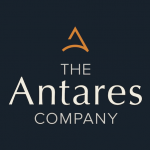Business operations continue to become more distributed, both people and technologies, drawing from a broad range of providers that connect through cloud-based services and distributed networks. This environment presents risks and management complexities that require a new level of coordination, monitoring, and collaboration. Foundational to managing in this environment is a well-documented operating model, which provides clarity across teams and capabilities.
WHAT IS AN OPERATING MODEL
The term operating model is used in a variety of ways across organizations. For this discussion, it is a collection of information that defines a specific business operation and is designed to meet a specific need. In small to medium organizations, the operating model can cover the entire organization and its associated operations, while in larger organizations, it may cover only a specific scope – like a business unit, or individual operation. When used to define a specific portion of an organization, it is useful to ensure that related models are built to be compatible with each other, allowing comparisons between different areas of the organization. This includes the use of common definitions and terminology across models, as well as references to related models.
When developing the operating model, it is important to understand the audiences that will use the model and ensure that it is developed in a manner consistent with their perspectives and conventions.
WHY IS IT IMPORTANT
The operating model provides a common understanding amongst different teams and audiences. It provides a document, similar to a blueprint, of the most important components of a business operation, allowing teams to collaborate and discuss the operation from a common framework. The operating model is developed to satisfy a specific purpose and objective, which guides the elements that are included.
A well designed and documented operating model will serve as a key artifact for:
- Communications: there are many different stakeholders and audiences that are interested in understanding the structure of a specific business unit. This includes senior executives, managers, investors, regulators, business partners, and employees. The operating model is an ideal way to describe an operation and its critical components and establish common definitions and terminology.
- Alignment of objectives: an operating model provides clear definitions of the components of a business operation, allowing objectives both within and surrounding the operation to be clearly understood. This is particularly useful when engaging new business partners or attempting to achieve results across business units where there is limited familiarity with the details of the operation outside the immediate team.
- Foundation for change: the first step in making change across an operation is a clear understanding of the current state. The operating model is a proven tool for defining the state of the operation, allowing changes to be clearly articulated in relation to a baseline.
As organizations and business functions become more distributed and dependent upon a variety of third-party providers – both people and technology platforms – a clear view of the components and interactions are increasingly important. The operating model is a key tool for documenting, communicating, and managing the details of these complex operations.
WHAT ARE THE KEY ELEMENTS
An operating model is developed with a specific purpose in mind, and its contents can vary based upon differing requirements and audiences. A well-designed model, however, will successfully satisfy a variety of needs and will typically contain at minimum the following elements:
- Business functions: key operational teams, typically aligned with organizational structure. Each function should have clear inputs and outputs. This is the core element of the operating model around which the other elements are structured.
- Geographic footprint: physical locations of resources supporting the function.
- Processes: business activities supported by each function. Most functions support multiple business activities that include a combination of standard and exception processes. Each process should have clear inputs and outputs, and a clear description of the interactions between functions and business partners should be included.
- Technologies: platforms and systems used by the business functions and processes to complete the associated activities. This inventory provides, among other things, a sense of training needs and operational complexity.
- Business partners / vendors: third-parties that support the business function. Third-parties may support multiple functions and processes or provide a variety of capabilities.
- Channels: the mechanisms through which the business function communicates with external audiences.
- Key metrics: key measures that illustrate the activity within a process and business function. These can be financial or non-financial measures such as unit volumes or processing times.
- Headcounts: human resources associated with each business function and geographic location. This will include an indication of the portion of the headcount that is remote, in-office, or hybrid.
The level of detail for each element is tailored to the specific business use and audience of the overall model. Specifically, the process element can take on several different forms and be produced with varying detail. It is important to consider the business purpose and audience perspective when determining the appropriate form and level of detail.
HOW OFTEN SHOULD IT BE REFRESHED
An operating model is not a static artifact in an organization and should be periodically refreshed. The initial production effort can be time consuming, but, if maintained regularly, can be refreshed with relatively low impact in a typical organization. Similar to keeping an organizational chart or capacity model current, the operating model is most effective when the information is an accurate representation of the operation. A best practice is to refresh the model at least annually or when a special event occurs.
- Annually: function, process, and headcount information are likely to change at least annually, and Incremental changes to other aspects of the model should be refreshed concurrently. New organization charts and capacity models are key inputs to the model refresh.
- Special events: if a major change such as a reorganization, acquisition/divestiture, or initiation of a new business occurs, the operating model should be updated to reflect the associated changes.
A well designed and maintained operating model will provide significant benefits to executives, managers, employees, business partners, and other interested audiences, and has become increasingly critical in the new highly distributed world of capabilities.

